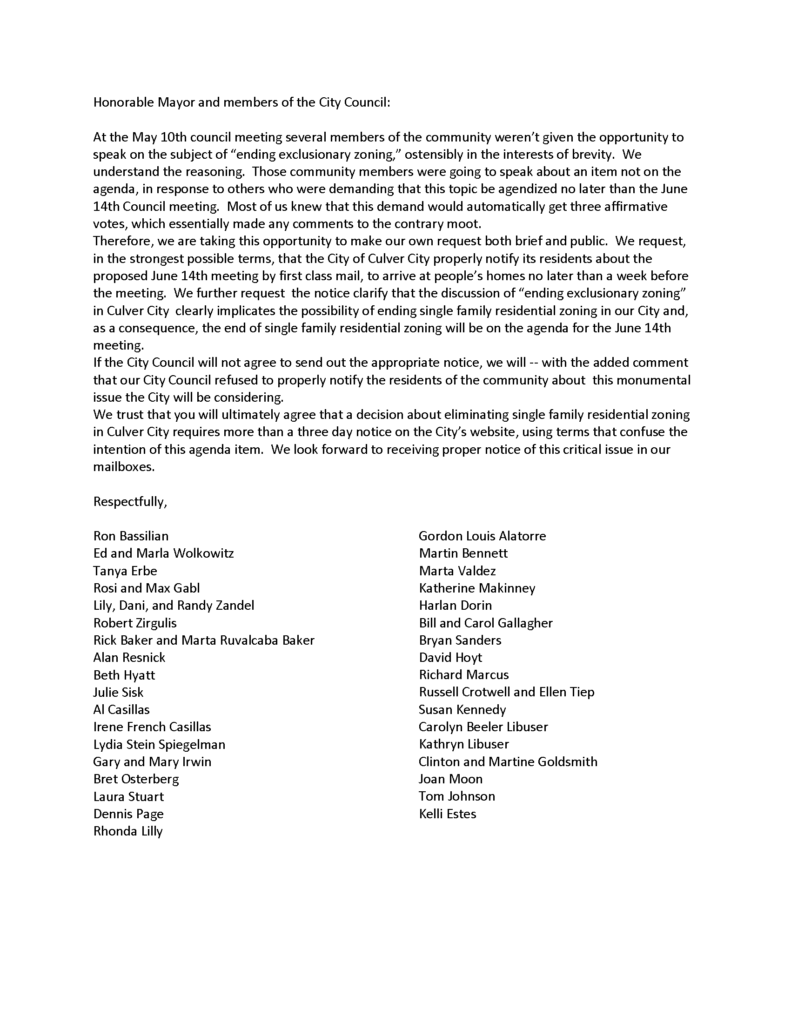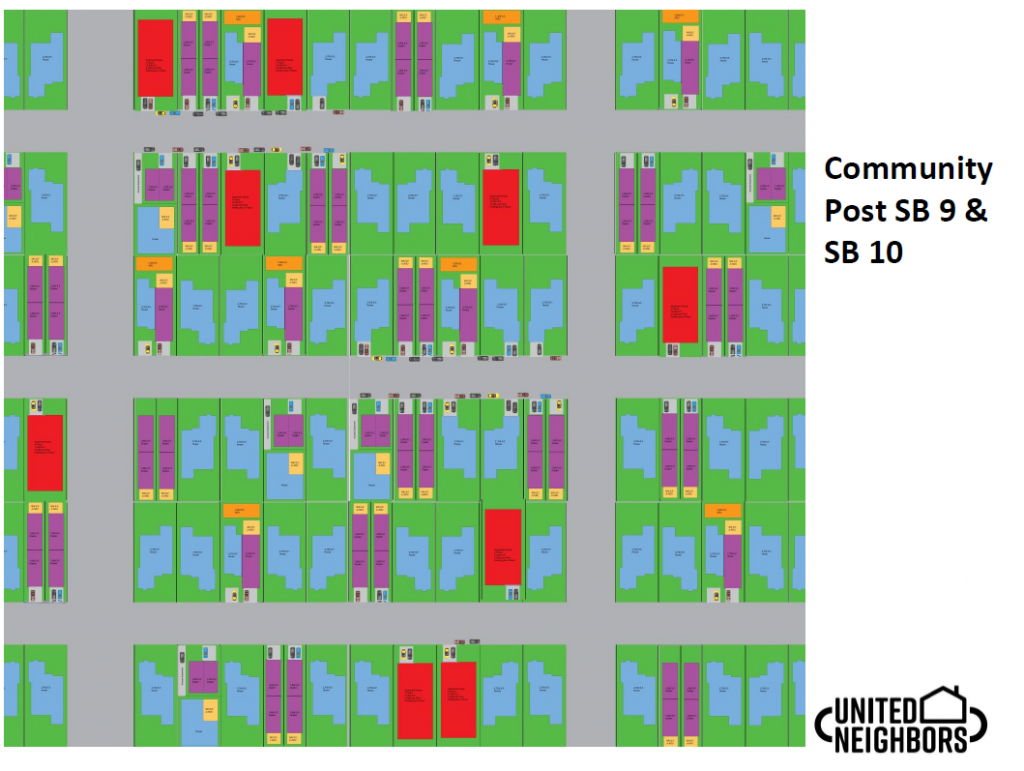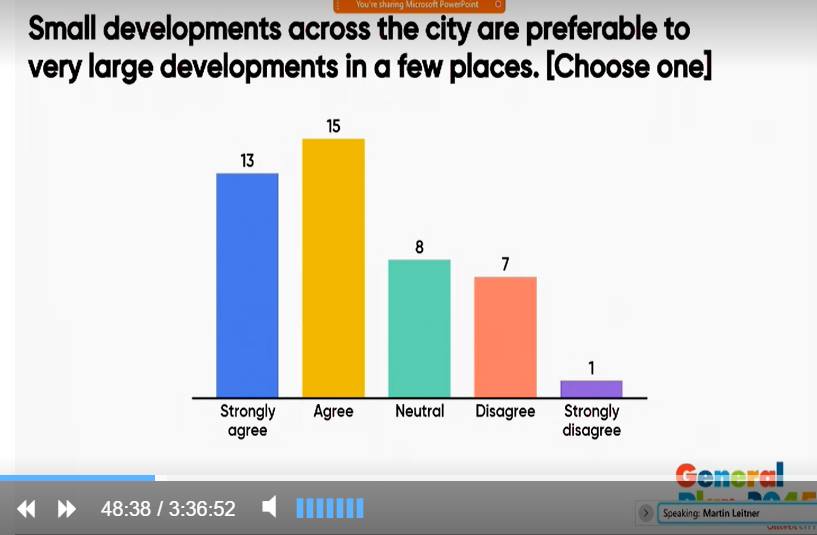Council was sued in federal court on June 22nd by Southern California Hospital of Culver City in response to their June 14th ordinance requiring an additional $5/hour “Hero Pay” for hospital employees. Councilmembers Vera and Eriksson opposed this “hero pay,” along with many residents, questioning the timing, legality and necessity of it. Undeterred, Council majority went along with it anyway.
The lawsuit makes a serious allegation – that SEIU, the union representing hospital workers, conspired with Councilmembers Lee, McMorrin and Fisch to single out this hospital and force a $5/hr temporary raise, circumventing their own collective bargaining protocols. SEIU did so in a quid pro quo, working with these three Councilmembers in group texts during Council meetings, offering pro bono legal support to defend the ordinance. This contrasts with the less serious tone of the hospital’s official statement.
Contrary to Daniel Lee’s claims, this hospital doesn’t make big profits. They are a MediCal hospital, and one of the few in the region. This means they operate off razor thin margins.
The hospital is represented by Sheppard Mullin, a major law firm with 270 lawyers combined in Downtown LA and Century City alone. They claim “declarative, injunctive, and monetary relief” – they want the court to strike down this ordinance, declare this type of ordinance unlawful, and pay them damages for having to fight this. They back up their allegations with some amazing and timely research. They present a timeline of collaboration from the April 12th through May 24th Council meetings, as well as SEIU’s dealings in Daniel Lee’s state senate bid. [10]
They present heavy evidence of texts from SEIU political director Maky Peters to Lee, Fisch and McMorrin during the April 12th council meeting. “Ms. Peters urged them to move quickly to agendize the combined Grocery/SCHCC ‘Hero Pay’ ordinance for a vote: ‘It’s actually the only way you’re gonna have [the union’s] pro bono support,’ concluding: ‘There are only so many ways I legally can say that.’” [11]
But the particularly damning allegation is in items 95-96 in the suit, which talks about the group texts during the May 24th meeting.
95: “At 9:50 p.m., while the meeting was still in progress, Ms. Peters opened a group chat with Mayor Fisch, Vice Mayor Lee, and Councilmember McMorrin. Apparently frustrated by the decision to defer immediate action on ordinance targeting SCHCC, Ms. Peters sought to assure Mayor Fisch, Vice Mayor Lee, and Council Member McMorrin: “We’re ready to fight court case””
96: “Viewed in context, the only plausible interpretation is that SEIU’s representative was telling three City Council members that the union was prepared to defend a SEIU-sponsored ordinance by providing legal support, while at the same time suggesting that the “only way you’re going to have the union’s “pro bono support” would be by the Council taking up the “Hospital ordinance” and the “grocery” ordinance as one combined bill. Ms. Peters’ final texts, directed at the Mayor in particular, remove all doubt as to the quid pro quo offered: “pro bono support” from SEIU in exchange for three members’ support: “Mr. Mayor” “We have your back” “There are only so many ways I can legally say that.”
In the video of the meeting, you hear the ringtones at 9:50pm, corroborating this claim.
This follows the previous meeting, and SEIU’s collective bargaining agreement after the May 10th meeting when the initial Hero pay ordinance was introduced. Fisch brought up that “[W]e received some new information that we have not had a chance to be advised by staff…” [98] meaning SEIU’s collective bargaining agreements with the hospital. The hospital had already accounted for pandemic working conditions in their recently signed agreement. The lawsuit claims here that SEIU is trying to do an end run around this agreement by getting Council to force their arm.
The lawsuit continues to lay out further details and evidence that “SEIU was offering an illegal quid pro quo: to obtain the Mayor’s support, the union was prepared to make payments, underwrite a legal defense, and assume responsibility for the legal consequences of adoption of the Ordinance, which was prepared at the union’s behest for the purposes of serving the special interests of the SEIU.” [110]
Councilmembers Vera and Eriksson both explicitly raised the concern of a lawsuit during the May 24th meeting. They both laid out the issue that the hospital alone is being targeted with this ordinance, and our city is alone to do such a thing. Their concerns were ignored by the others, which left them confused. Given these texts happening without their knowledge, we now understand why.
This also explains Lee’s aggressive leading role in this ordinance. Lee had not only applied for a position with SEIU, they backed his run for State Senate to replace Holly Mitchell by ghost writing an op-ed for them. [78] He has a longstanding relationship with them, and part of this quid pro quo was their implied continued support for his political ambitions.
Council and SEIU have up to August 20 to respond to these allegations, and we look forward to their response. But they said nothing to disclose these private exchanges during a Council meeting or the conflict of interest presented. More so, Daniel Lee explicitly denied a conflict of interest with the hospital by asserting “no money has changed place” – leaving out the rest of his relationship with the union.
Many of us at Protect Culver City have long suspected that we have a “shadow council” operating behind the scenes. This goes all the way back to Fisch and Lee’s 2018 inauguration, when their override of the mayoral rotation resulted in a Brown Act complaint which they corrected. Since then, official Council proceedings have become little more than rubber stamps for what so obviously is done under the table. We get more from their social media exchanges with their activist base than we ever get from Council meetings.
But it’s one thing to suspect, it’s another to prove. We don’t have the resources for lawyers, who could find out they text each other during Council meetings without telling anyone. Council’s hubris made them go after an entity which had such resources.



